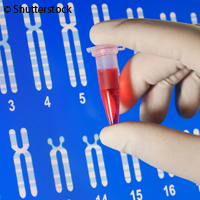Complete genome map offers treatment clues for multiple myeloma
Why does cancer respond to a drug in one patient but not another? Why does cancer often return, resistant to treatment that worked before? While such 'why' questions remain answered, the completion of the genomic portrait of multiple myeloma promises a better understanding of this form of blood cancer as well as potential new treatments. The analysis of the whole genome of 38 patient samples was conducted by an international team of geneticists, as part of the Multiple Myeloma Genomic Initiative. Overall, more than 150 patient samples were collected and additional multiple myeloma genomes sequenced, according the paper published in this week's issue of Nature journal. Multiple myeloma is an incurable malignancy of the blood. It forms when a plasma cell mutates and divides recklessly, embedding into bone marrow. It often responds unfavourably to initial treatment and is inevitably followed by relapse with new tumours which are highly resistant to drugs that had previously worked. Some 21,000 new cases emerge every year in Europe. Sequencing the whole multiple myeloma genome enabled scientists to discover which genes are present in a myeloma tumour, as well as to determine which genetic regions may harbour mutations. Analysis of the sequenced genome, which represents the most critical aspect of the study, created an unprecedented opportunity to pinpoint the most important genes and cellular processes driving the disease. 'Already, we can see that mutations are funnelling into a limited number of pathways,' commented Professor Todd Golub with the Eli and Edythe L. Broad Institute and the Dana-Farber Cancer Institute in the US, which coordinated the study. 'This is a demonstration of the value of looking at more than just a single tumour at great depth.' The sequencing tools developed for this purpose allowed scientists to analyse the multiple myeloma genome at extremely high resolution and to dramatically decrease the error rate for detecting all types of mutation. Dr Gad Getz from the Eli and Edythe L. Broad Institute added that 'now, we can find those genes whose mutations occur more than expected by chance'. The study revealed a variety of mutated genes that are involved in the disease and more importantly, identified mechanisms that could be therapeutic targets. One surprise was discovering an abnormality in the serine/threonine-protein kinase B-Raf or more simply the B-Raf gene. While this abnormality is known to occur in melanoma and colon cancer, it has not been previously related to multiple myeloma. 'These genes, which are frequently mutated, were not on anyone's radar before when thinking about multiple myeloma specifically or cancer in general,' explained Professor Golub. Although 'it's going to take a lot of biological research to sort out whether these will make good drug targets, ... this is an example of how genetic analysis can help point the field in the right direction very dramatically'. A number of B-Raf inhibitors are currently under development; findings indicate that these drugs should be evaluated in clinical trials in multiple myeloma. Moreover, they will play an important role in developing better treatment options for individuals who derive little benefit from existing therapies, and may ultimately help provide multiple myeloma patients with the most appropriate treatment for their disease. Professor Golub concluded that with more samples and analytical tools to explore genome-related options, a new picture of multiple myeloma is beginning to develop, and with it, new genetic insights. 'This study shows that there really are entirely new cancer-causing genes that are going to be discovered through these sequencing efforts.' So it turns out that the 'why' is tied to genetics. And the treatment of cancer is quietly moving onto a new playing field, combining science and genetics to derive target-specific treatments that could bring discarded and unrelated drugs into play.For more information, please visit: Eli and Edythe L. Broad Institute:http://www.broadinstitute.org/Dana-Farber Cancer Institute:http://www.dana-farber.org/Nature: http://www.nature.com/nature/index.html
Countries
Israel, United Kingdom, United States



